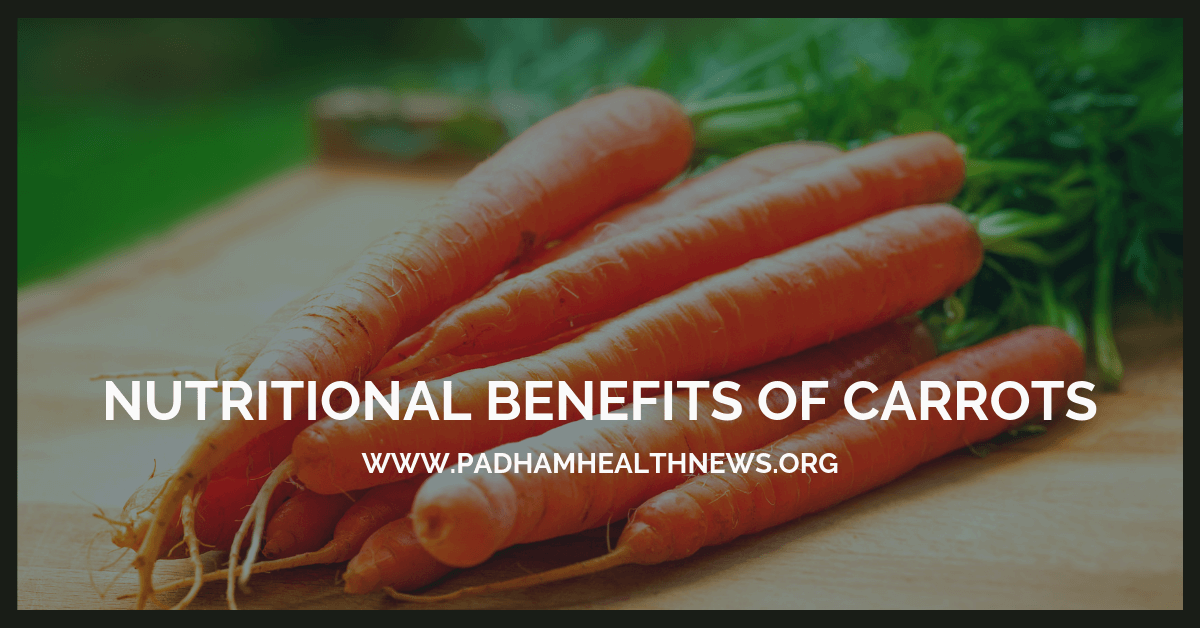It’s winter time and in most parts of India- the fresh sight of carrots always ease us. Ranging from the usual orangeish hue- to the famous dark red “Delhi” carrots- we have them aplenty- and not-so-costly rate that would just tempt us to stock them up. In this article of PADHAM HEALTH NEWS would dwell deep into the fascinating world of carrots.
It belongs to the Apiaceae family and the species that is most common is the Daucus carota. The etymology of carrot states that the root word was initially from an Indo-European origin –“Ker” meaning horn- and form there descends the Greek word “ karoton”- modified later to the Latin word “karota” and finally the French name “carotte”- before it is popularly known as carrot now.
Also read: The health benefits of oats
History of carrots:
The first recorded usage of carrot in history dates back to Persia- erstwhile Afghanistan. It is considered that Carrots were originally purple or white with a thin root, then a mutant occurred which removed the purple pigmentation resulting in a new race of yellow carrots, from which orange carrots were subsequently developed. Reports also suggest that carrot seeds have been found as early as 2000-3000 BC in Switzerland and Southern Germany.
The carrot plant is said to have been introduced to the Europeans via Spain in the 8th century. Cultivated carrots appeared in China in the 14th century, and in Japan in the 18th century. Pedanius Dioscorides (c. 40-90ad) catalogued over 600 medicinal plant species during his first century travels as a roman army doctor and accurately describes the modern carrot. The third book of Dioscorides the Greek – Roots – sets out an account of roots, juices, herbs, and seeds — suitable both for common use and for medications
Carrot domestication transformed the relatively small, thin, white, heavily divided (forked or sprangled – spread in different directions) strong flavoured taproot of a plant with annual biennial flowering habit into a large, orange, smooth, good flavoured storage root of a uniformly biennial or “winter” annual crop we know today. Modern carrot breeders have further refined the carrot, improving flavour, sweetness, reducing bitterness and improving texture and colour. There have also been significant improvements in disease and pest reduction resulting in ever-increasing yields. Flavour, nutritional and processing qualities are also uppermost in the minds of modern breeders.
Health benefits:
Carrot is considered highly nutritious and hence is recommended for all age groups. The bright orange colour- so characteristic of carrot is due to the presence of Beta-carotene and smaller amounts of alpha-carotene, gamma-carotene and zeaxanthin and lutein. They are known to be the richest source of Vitamin A- constituting for 9.4g in 100 g of carrot. Carbohydrates account for 9.6g, calcium- 33 mg and phosphorous- 35mg. Significant amounts of Vitamin K, Vitamin B6 and Potassium are also hidden in Carrot.

Pic courtesy: unsplash.com
Also read: The magic of tender coconut
Coming to the health benefits of carrot- they are a rich source of anti-oxidants. This, in turn, accounts for the cardiovascular benefits of carrot. We have heard of innumerable grandma-stories about the relation between carrots and eye-health. Research does indicate a decrease in incidences of glaucoma for women- when consumed carrot more frequently. Their role in reducing the incidence or the severity of colo-rectal cancer is also being widely researched upon.
Carrots are easy-to-cook vegetables and can be had in many forms in our daily menu. Raw carrots- sliced neatly add to a colourful bowl of salad. They can also be grated and tossed up with little seasoning a tinge of lemon juice to make for some great salad, again. Carrot-ginger soup is a very common recipe- especially during winters. Similarly, carrot juice is also a hot-favourite among people. South Indian delicacies like Kootu and Avial- often add boiled carrots among other vegetables to add colour, flavour and health to the dishes. North Indian dishes also use carrot in many ways-like kurma (akin to kootu) and even specialized dishes like Veg jalfrezzi, etc. So- the next time you hit the market- buy a bunch of healthy carrots and indulge in good health- naturally !
Also read: The top 100 nutritious foods by BBC
